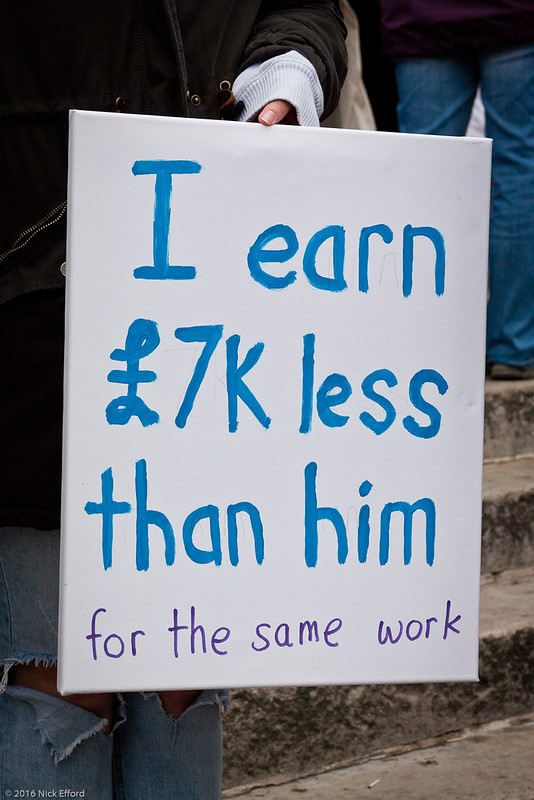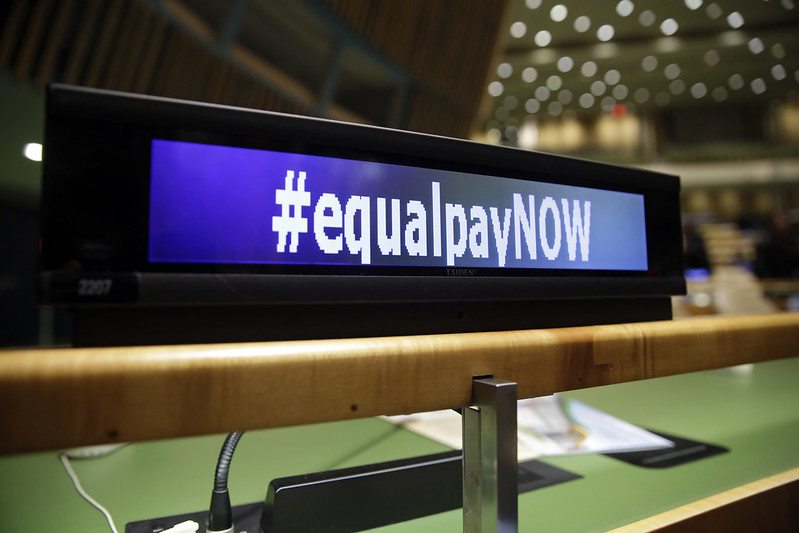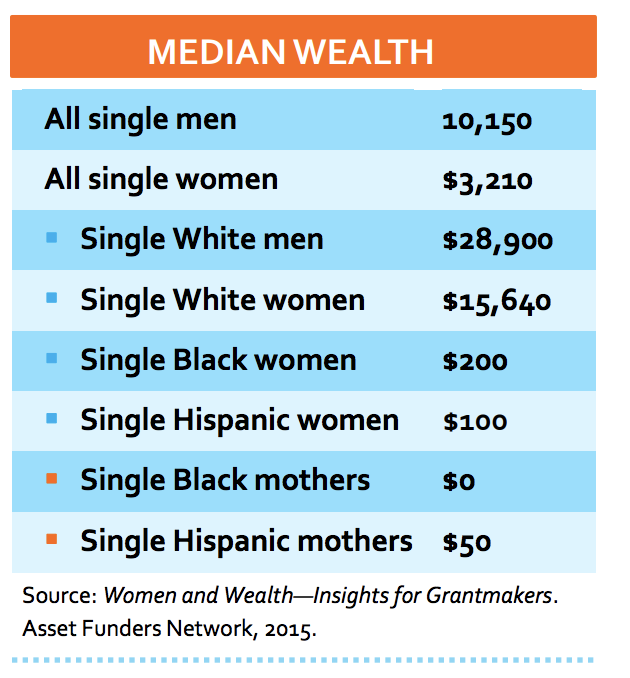The public outcry that emerged in response to police killings of Black Americans prompted important discussions about not only the epidemic of police violence against Black and Brown communities, but also about the broader structures of systemic inequality that hold people of color back in myriad other ways. And one vital area in which structural inequality is especially pronounced is related to pay.

The pervasive gender wage gap in this country is well-documented, which exacts a heavy toll on the economic security of women and their families. The wage gap is most pronounced for Black, Latinx, Native/Indigenous and certain groups of AAPI women, who often face pay discrimination due to both race and gender.
It is therefore critical our public policy responds to the particular obstacles that women and people of color face to achieving equal pay and advancement in the workplace.
New research shows that emerging state laws prohibiting employer inquiry into the prior salary of job candidates or new hires have not only resulted in pay increases for both women and Black workers, but have also increased pay transparency, which is critical to closing gender and race-based wage gaps.
These laws, often referred to as salary history bans, have been enacted in a growing number of states and cities in order to disrupt the cycle of gender and race-based pay disparities in the United States. And research shows that they are working.
The Need for Pay Transparency
Overall, women in the U.S. working full-time, year-round, are paid 82 cents to every dollar paid to men. When race and ethnicity are factored in, the economic picture is even bleaker: Black women overall are paid 62 cents, Native women 57 cents and Latinas just 54 cents for every dollar paid to white, non-Hispanic men.
Asian American and Pacific Islanders overall make 90 cents for every dollar paid to white men, but specific ethnic groups within the AAPI community face substantially larger wage gaps.
U.S. women overall lose a combined total of $916 billion per year due to these gender and race-based wage gaps—which take a direct toll on not just women, but also the families they support and their broader communities. If the wage gap were closed, each year, the average working woman would be able to pay for more than a year’s worth of food, 13 additional months of child care, or nearly 10 additional months of rent.

Unequal wages also contribute to the overall gender wealth gap, which is even larger than the wage gap, especially for women of color.
Different from income, wealth represents a person’s overall net worth, and the resources they have at their disposal to be used in the future—for example, to use in an emergency, to pay for college or retirement, to own a home or a business or to pass on to their children. While an individual’s income is essential to covering day-to-day needs, wealth is critical to achieving long term and sustained economic security.
While women overall earn an average of 82 cents to the dollar compared to men (the wage or income gap), they own just 32 cents to the dollar.
The wealth gap is especially stark for women of color, who own just pennies to the dollar compared to both white women and men. Gender and race-based wealth disparities create long-term and intergenerational economic inequality.

We therefore need strong policy responses to address the wage gap now, in order to begin breaking the cyclical wealth disparities that have oppressed Black communities and other communities of color for hundreds of years.
The gender and racial wage gaps are driven by a variety of factors—including explicit discrimination, implicit or unconscious bias, occupational segregation, inadequate family leave policies, and a lack of affordable child care, among others.
Another major contributor is a general lack of transparency around pay. This issue is multi-faceted: workers often do not discuss wages with one another—due to societal norms or because it is prohibited by their employer—which makes it harder to uncover gender and race-based pay disparities.
But even when women workers do discuss pay and ask for raises, they are denied more often than men. Another barrier to pay transparency is that many job candidates do not know the pay range of a given position when they apply. This can negatively affect their bargaining power because they are unaware of the higher end of the possible salary.
Salary History Bans: Pay Transparency’s New Frontier
The common employer practice of requesting and relying on a job candidate’s prior salary to set pay at a new job perpetuates widespread gender and race-based wage disparities in the United States. In response, a growing number of states have enacted salary history bans (SHBs), which prohibit employers from requesting or relying on a prior salary in setting pay.
Emerging research has already shown that SHBs have proven effective in achieving their intended goal of narrowing the gender wage gap. A newly released study now demonstrates SHBs not only reduce the gender wage gap, but also significantly narrow the wage gap for Black workers of both genders.
The new research out of Boston University School of Law found that while workers overall earn relatively more when they switch jobs in regions subject to SHBs and less when they switch without such a law in place, there are “particularly strong effects of SHBs on groups subject to historical discrimination.”
Specifically, the research shows that after enactment of Salary History Bans, women overall earned 8.5 percent more, and Black men and women earned 16 percent and 14 percent more, respectively.
Researchers also found, following the enactment of these laws, employers posted wage information more often, noting that the share of online help-wanted advertisements that list salary information roughly tripled following the enactment of SHBs.
This is significant—as it suggests that because these laws remove a wage bargaining tactic used by employers to pay the lowest possible wage (reliance on salary history), they therefore also induce more employers to list wages on job postings, which results in a more balanced playing field for workers in salary negotiations.
As noted by the researchers, this evidence suggests that the bargaining advantage that salary history has traditionally provided employers has been “an important factor in perpetuating wage inequality, especially for women and African Americans.” This study therefore contributes to the growing body of research showing the need for the continued enactment of salary history bans to put an end to this type of institutional discrimination.
Companies Must Do More to Combat Economic Inequality
This new research also supports the need for increased pay transparency. Thus far, Colorado, California and Washington have enacted laws requiring employers to provide the salary range for a position in question at varying times.
Additionally, some companies have voluntarily chosen to post salary information and institute other pay transparency measures—including Intel, which last year took the important step of publishing online its internal pay data, which reflected widespread gender and race-based wage disparities.

However, action is still needed on a much broader scale. This year, Black Women’s Equal Pay Day will be observed on August 13. This is the day in 2020 to which Black women have to work in order to be paid what white, non-Hispanic men made in 2019. This represents more than seven months of additional work.
As a number of companies have recently pledged action to address racial injustice, we must demand that they take proactive, concrete steps to end the pay discrimination that continues to perpetuate income inequality and economic oppression for Black women and people of color across the country.



